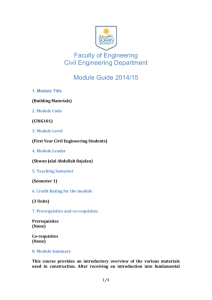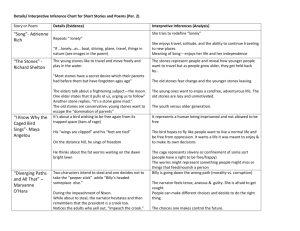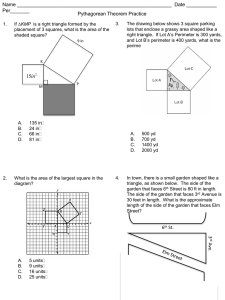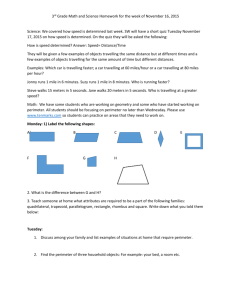King Arthur*s Path
advertisement
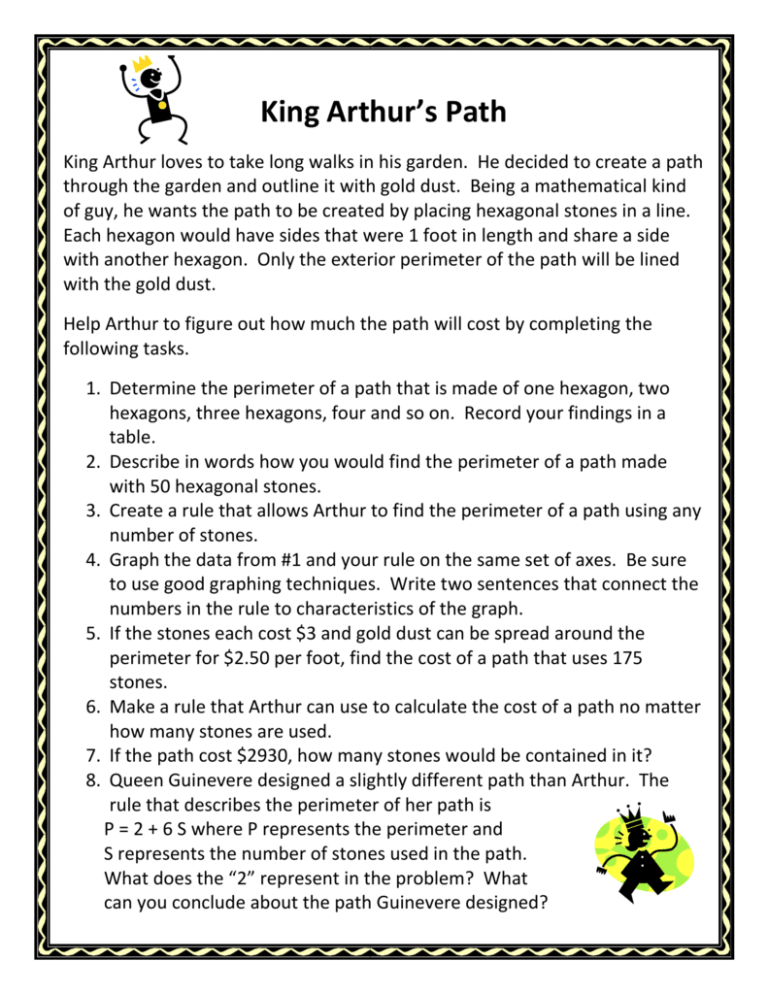
King Arthur’s Path King Arthur loves to take long walks in his garden. He decided to create a path through the garden and outline it with gold dust. Being a mathematical kind of guy, he wants the path to be created by placing hexagonal stones in a line. Each hexagon would have sides that were 1 foot in length and share a side with another hexagon. Only the exterior perimeter of the path will be lined with the gold dust. Help Arthur to figure out how much the path will cost by completing the following tasks. 1. Determine the perimeter of a path that is made of one hexagon, two hexagons, three hexagons, four and so on. Record your findings in a table. 2. Describe in words how you would find the perimeter of a path made with 50 hexagonal stones. 3. Create a rule that allows Arthur to find the perimeter of a path using any number of stones. 4. Graph the data from #1 and your rule on the same set of axes. Be sure to use good graphing techniques. Write two sentences that connect the numbers in the rule to characteristics of the graph. 5. If the stones each cost $3 and gold dust can be spread around the perimeter for $2.50 per foot, find the cost of a path that uses 175 stones. 6. Make a rule that Arthur can use to calculate the cost of a path no matter how many stones are used. 7. If the path cost $2930, how many stones would be contained in it? 8. Queen Guinevere designed a slightly different path than Arthur. The rule that describes the perimeter of her path is P = 2 + 6 S where P represents the perimeter and S represents the number of stones used in the path. What does the “2” represent in the problem? What can you conclude about the path Guinevere designed?






